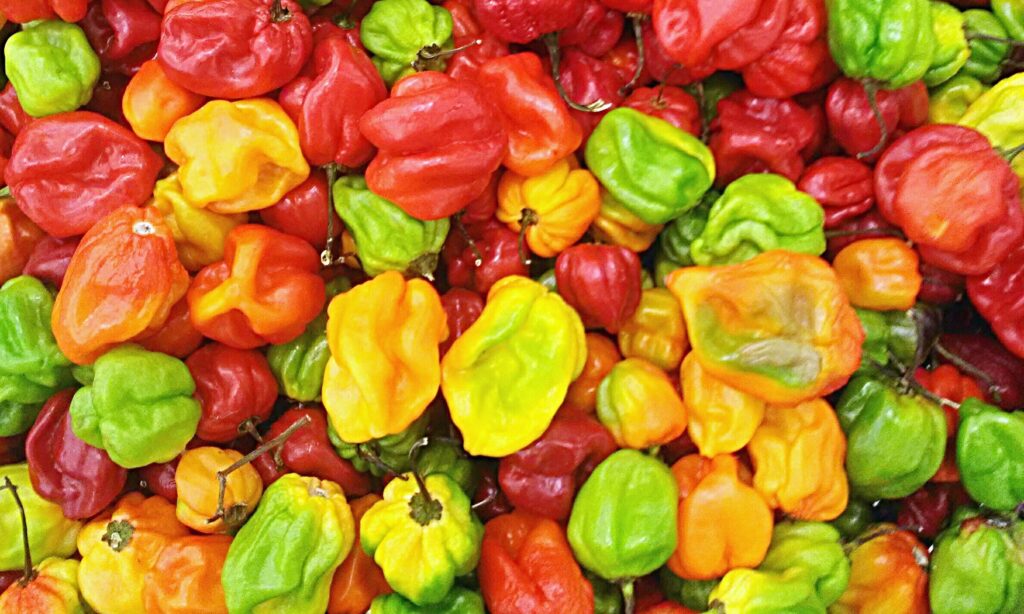
Confused about the pecks of peppers in the seed catalogues? Wanting to heat up your garden game this summer? Read on.
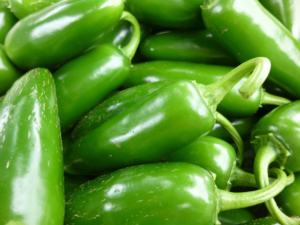
Do you recognize these pepper pods? They are nacho’s best friend, jalapeno. (Image from Amy Turnbull)
The Best Types of Peppers
Peppers have a lot of variety to offer: in flavour, heat level, wall thickness, colour, pod shape. Likely, you only have limited space in your garden and decisions have to be made. Let’s examine the different types of peppers to help you make a decision.
Unlike many other garden vegetables, peppers are a diverse group comprised of many species.
Species/group |
Traits |
Heat (SHU)* |
Uses |
Variety notes |
Capsicum frutescens |
1 to 4 ft tall plants, 100 pods/plant |
30,000-70,000 | Hot sauces | Tabasco is the only readily available variety. |
Capsicum baccatum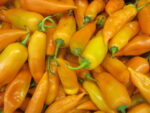 Aji Amarillo Pepper (Image from Luis Tamayo) |
Traits: Large plants with fruity-tasting peppers. Many pod shapes and colours. | Heat: 30,000-50,000 | Uses: Important in South American cuisines | Notes: Many start with “aji” (pronounced ah-hee) |
Capsicum chinense Capsicum chinense pod diversity. (Image from Filo gèn’) |
Traits: 2 ft tall plants with a range of pod shapes. Distinguished from other species by white flowers with purple anthers and filaments. Pods dry well. | Heat: Inferno level, 80,000-150,000 | Uses: Caribbean cuisine, starting bonfires | Notes: Very hot: Bhut jolokia, ghost pepper, habanero, Scotch bonnet, fatalii (yikes!). Not hot: NuMex Suave Orange and Suave Red lack the heat but have nice flavour. |
Capsicum annuum |
||||
Ancho
|
Traits: Exceptionally dark green plants and pods of wonderful flavour. Can be dried | Heat: pleasant 1000-1500 | Uses: Stuffing, roasting, frying | Notes: Called poblano when green and immature, ancho if pod ripens red or mulato if pod ripens brown. |
Asian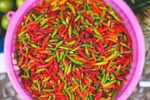 Asian pepper pods. (Image from Peter Hershey on Unsplash) |
Traits: Small, thin pods of varying mature colour. | Heat: Range from mild to very hot | Uses: Asian cuisine: fresh sauces, frying, curries | Notes: Thai chili (very hot), Japan’s shishito (mild, varieties: takara, mellow star), and India’s pusa jwala (hot, variety: crackle). |
Bell |
Traits: Blocky, large pods with four cells each and thick skin. 10-20 pods/plant | Heat: mild | Use: Fresh eating | Notes: Many varieties available based on mature pod colour |
Cayenne |
Traits: Long, slender and hot pods that mature to red. Pods have a puckered appearance and dry readily. | Heat: 30,000-50,000 | Uses: Pleasantly-flavoured hot sauces, Sichuan chili oil, chili flakes | Notes: Cheyenne and Cayenne Long Slim are common. |
Cherry Round cherry peppers. (Image from James Lee.) |
Traits: Look like giant cherries. | Heat: pleasant 0-3500 | Uses: Fresh eating, pickled and eaten alongside sandwiches | Notes: Any variety with “cherry” or “bomb” in its name. |
Jalapeno |
Traits: Distinctive herbaceous flavour and heat in a short, fat pod with thick green flesh. Usually ripen to red. Around 30 pods/plant are produced | Heat:8000-50,000 *note the wide range in heat. | Uses: Pickling, stuffing (get a larger podded variety), salsas. | Notes: Varieties vary widely in heat and cracking (surface marks as the pepper ripens). ‘Early Jalapeno’ is common. Called chipotle when dried with smoke. |
New Mexican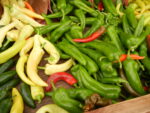 New Mexican pods. (Image from orchidgalore) |
Traits: Sometimes called ‘Anaheim’ or ‘fresno’ as a group. Large pods mature to red. Plants produce 10-20 pods | Heat: 0-2500 | Uses: One of the most versatile peppers: roasted, stuffed, dried for paprika or decoration | Notes: Many varieties start with ‘NuMex’. Joe E. Parker is common. Paprika pepper varieties are in this group, e.g. ‘Sweet Paprika’. Fresno peppers point upwards when immature. |
Serrano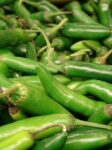 Serrano peppers (Image from Plants of Hawaii) |
Traits: Pendant, pointed pods. Look similar to a jalapeno but a bit longer and thinner. Plants can be large, up to 5 ft. | Heat: 10,000-20,000 | Uses: Typically eaten green, used in pico de gallo and other Mexican dishes | Notes: Hot Rod, Feroz and Sureno. |
Tapered |
Traits: Also known as Ram’s Horn or Corno di Toros. Sweet and flavourful pods that mature to red or orange. Thinner flesh than a bell pepper | Heat: Mild, <1000 | Uses: Excellent for roasting | Notes: Carmen, Cornitos, Escamillo, Marcato are all excellent varieties. Cubanelle (Italian frying) peppers are in this group. |
Wax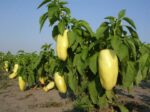 Hungarian wax peppers and plants (Image from Civertan). |
Traits: Also called Banana peppers. Yellow when immature (all of the other peppers are green when immature), maturing to orange or red. Mild flavour. | Heat: Mild to medium, <15000 for Hungarian hot wax, <500 for banana types | Uses: Usually eaten when yellowSmall diameter makes great pepper rings for pickling | Notes: Hungarian hot wax, sweet banana, goddess, pageant |
*Scoville heat units are a measure of the spiciness of peppers. To measure the concentration of capsaicin (the spicy chemical in peppers) a pepper extract is diluted until there is no detectable heat. In the pepper pod, the capsaicin-producing glands are in the placenta (the white tissue to which the seeds attach), although at high concentrations, capsaicin can migrate into the surrounding tissue. For a great comparison of chilis by heat level, visit the Chile Pepper Institute (New Mexico State University).

This Filipino bird’s eye chili (C. frutescens) was too hot for my taste, but I grew the plant for several years because it was beautiful. (Image from Amy Turnbull)
Since pepper plants are productive, making many pods per plant, you’ll hopefully be able to squeeze many varieties in your garden. I grow around ten varieties because they have a range of culinary uses and distinctive tastes.
Selecting the right variety
Pepper choice is a highly personal issue. Here are some considerations:
1. What culinary use or recipes with peppers are you hoping to make?
Do you want dried peppers for powder, chili oil, toasting, and grinding? Look for thin-walled varieties
Do you want peppers for hot sauces? Look for ones with lots of flavour or heat, depending on your preference. This website is a great primer on making hot sauces.
Do you roast peppers? Fleshy, red peppers are the most popular. Large pods with only two lobes (like ram’s horn peppers) are easiest to process in large quantity. Poblano are also popular roasting peppers.
2. Look at the days to maturity.
Some of the hot peppers have a long growing season (over 150 days) and will need protection in the fall to ripen. C. chinense varieties need at least 200 days to reach maturity.
Green peppers mature before coloured peppers.
Sweet peppers generally have a shorter growing season than hot peppers.
Planting
In early April:
Six to eight weeks before the last frost, you’ll need to start the pepper seeds indoors (that’d be around the beginning of April in London). There are some great guides available online (from the Seed Savers Exchange). If you’re new to growing peppers, the Capsicum annuum group is the easiest to grow and a good place to start.
Tips for germinating peppers:
-
-
- Keep the soil between 24 C and 27 C
- Be patient. Seeds take f-o-r-e-v-e-r to germinate (forever = 2-3 weeks)
- Harden your seedlings off when the weather warms at the end of May (see Hardening off isn’t hard)
-
In mid-June
Planting: Don’t rush getting your peppers into the garden. Peppers like warm soil and warm nights: at least 21 C soil and nighttime temperatures above 10 C. Sifting through ten years of weather data from the London weather station, planting on June 8th will guarantee you nighttime temperature above 10 C (with no more than two nights in a row below this temperature after this date).
Site selection: Peppers need 8 to 10 hours of sunlight to be productive. Soil should drain well. Plants should be spaced 45 cm (18”) apart in rows 60 cm apart (2 ft).
Growing tips for the best peppers
-
-
- Once planted in the garden, apply 2.5 cm of organic mulch around the plants to conserve moisture and suppress weeds
- Give plants 2.5 cm of water each week if rainfall isn’t enough. Ensure plants have moisture when flowering
- Once the fruit has set, apply your favourite fertilizer
- Hand pull weeds to avoid disturbing the roots with a hoe
-
Harvest
Peppers can be picked green or allowed to ripen to their mature colour (red, orange, yellow, and less commonly purple). You will notice the taste changing as the peppers ripen. In other words, sweet varieties will become sweeter and hot varieties will become hotter. Thin-walled varieties will be dry at maturity, although you may need to bring the pods indoor to dry if the end of the season is approaching.
Common Diseases
Rather than list the diseases, you can use this great tool to identify the disease in your pepper plants. It’s based on diseases common in Ontario (Tool from OMAFRA). The common diseases and disorders are listed in another format here.
From my experience, peppers are generally healthy in the garden. If it’s a wet year, soft rot can be a problem (the name pretty much explains the disease symptoms!), and there is a bit of anthracnose on pods later in the season. In both cases the losses are minimal. Similarly, if the weather is uncooperative, blossom drop can be bothersome early in the season.
Recipe
Chili oil is probably the most versatile preparation of chili peppers that I have in the kitchen. While many recipes exist, this is my favourite (Serious Eats). To make the condiment, oil is heated with a few spices and poured into a jar with chili flakes (I use cayenne peppers for this recipe). After sitting for a few weeks in the fridge, I spoon this oil on everything from noodles to soups to vegetables. The vibrant red oil in jars with chili flakes is so pretty that I’ve even given it out at Christmas.
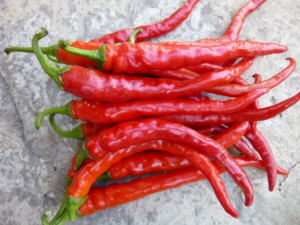
These cayenne peppers will dry readily and make beautiful chili oil to heat up the winter months. (Image by Amy Turnbull)
About
Domestication
Chili peppers are the most widely grown spice plant worldwide. All species of the Capsicum genus (around 30 species) are from North or South America. Bolivia and Peru are considered the original range of Capsicum species. However, Mexico is believed to be the original home of Capsicum annuum, the largest group of peppers grown today. Remains of these peppers have been found in caves with corn and squash, dating to 9000-6000 years before present (PNAS or this podcast summarizes the paper).
How did peppers spread from South America to Mexico? Birds. Wild chili plants are perennial shrubs with fruit that readily detaches from the plant when ripe. Fruit-eating birds consume the peppers and disperse the seeds. Conveniently, birds cannot taste the heat of capsaicin!
Global spread
When Europeans first tasted the heat of peppers, they attributed it to the heat of black pepper. This is how the name ‘pepper’ was given (Wikipedia). Once peppers were taken to Europe by Columbus, they rapidly scorched their way along the Spice Road and were quickly adopted into local cuisines (Chemistry Views). Since then, peppers are central to many diverse global cuisines. Why not give a new variety a try in your garden.
Read More about growing vegetables:


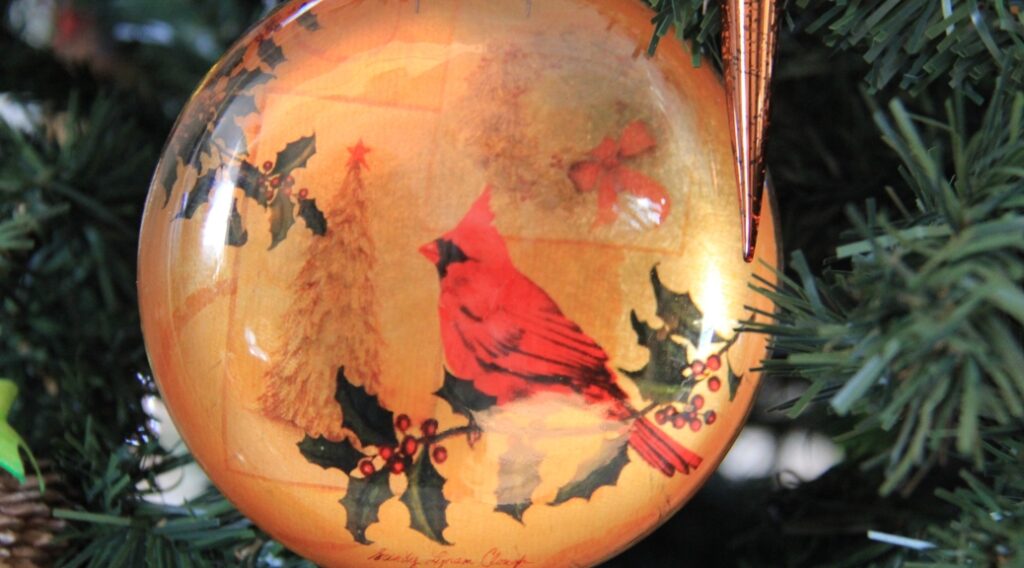
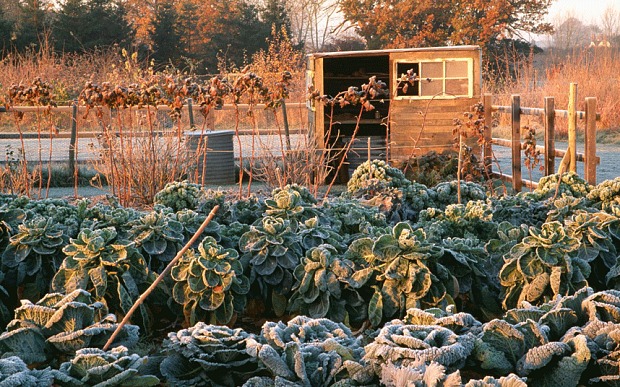
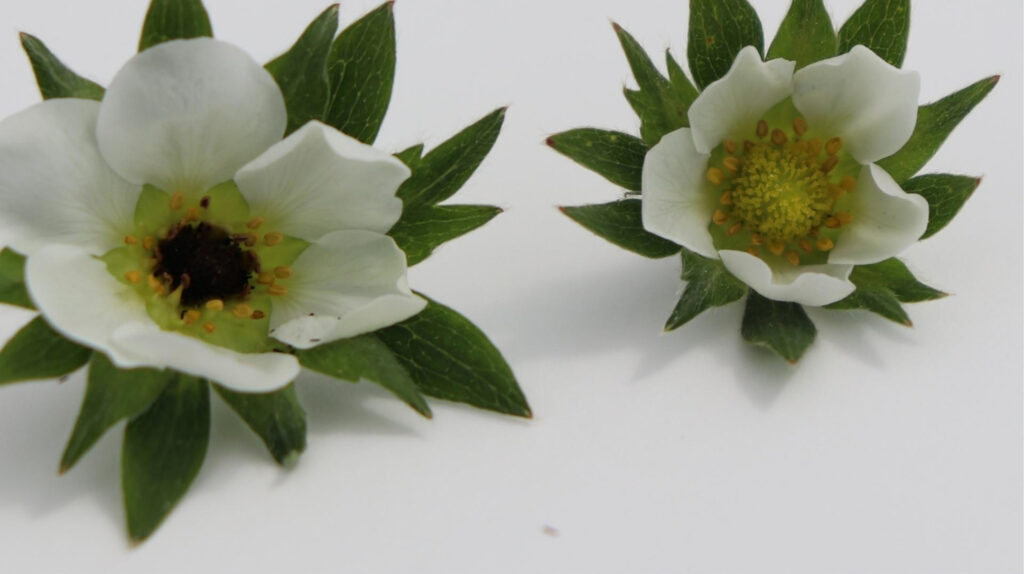
About The Author: Amy Turnbull
Scientist, researcher and professor at Fanshawe College. Avid grower of edibles in her home garden.
More posts by Amy Turnbull